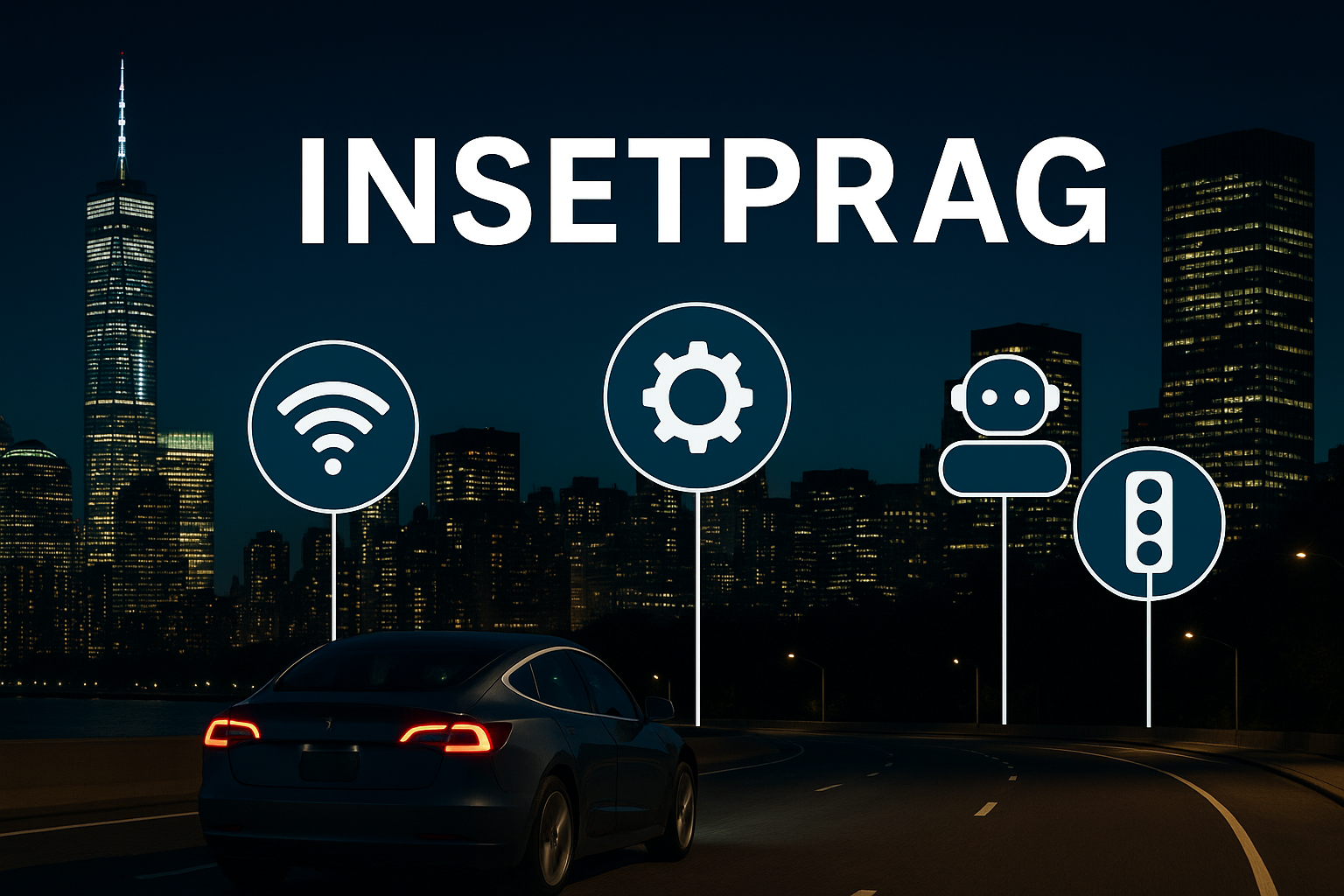In the ever-evolving world of digital innovation, where integration, functionality, and practicality dominate strategic agendas, a new term is beginning to define a fresh wave of thinking: Insetprag. A portmanteau of “integrated” and “pragmatic,” Insetprag reflects a rapidly emerging concept in software, systems design, and business development. It centers on the idea that technological systems must not only be interconnected but also built on practical, user-focused principles that solve real-world problems.
As industries move toward more intelligent, adaptable, and responsive systems, Insetprag is gaining traction as a mindset and method for shaping the next generation of solutions. This article explores the concept of Insetprag, its significance, applications, and why it might be one of the defining frameworks for the next decade of technology.
What is Insetprag?
Insetprag can be broadly defined as the design and deployment of integrated systems rooted in practical application and user needs. It bridges the gap between theoretical software architecture and the on-the-ground challenges faced by users and industries.
At its core, Insetprag believes in:
-
Integration across platforms, tools, and environments.
-
Practical solutions over academic idealism.
-
Real-time adaptability and iterative learning.
-
Sustainability, efficiency, and user-centric design.
In an age where digital complexity can lead to inefficiencies, Insetprag emphasizes simplicity and relevance—systems that just work and do so with intelligence.
The Philosophy Behind Insetprag
Insetprag is as much a philosophy as it is a technological framework. It’s built on five central tenets:
-
Integration First
Modern users interact with countless devices and platforms daily. Insetprag argues that technology should no longer exist in silos. Whether it’s data exchange between platforms, software compatibility, or hardware interconnectivity, systems should speak the same language. -
Function Over Form
Beautiful interfaces are only useful if they deliver value. Insetprag puts function at the forefront, ensuring that each feature, button, or line of code serves a purpose that enhances usability. -
User-Focused Development
Instead of top-down design where decisions are made far from users, Insetprag insists on bottom-up feedback loops. Users are part of the design process, and their needs, habits, and pain points shape development cycles. -
Lean and Scalable
Insetprag is opposed to technological bloat. Instead, it encourages modularity—building systems that are light, agile, and scalable based on demand. -
Sustainable Innovation
Technologies must not just solve problems but do so responsibly—both environmentally and ethically. Energy efficiency, data privacy, and ethical automation are essential to any Insetprag solution.
Insetprag in Action: Real-World Applications
Insetprag is not a theory waiting for implementation. It’s already influencing a wide range of sectors where integration and practical functionality are paramount.
1. Smart Infrastructure
Cities are becoming smarter, but many struggle with disjointed systems. Insetprag facilitates the integration of traffic sensors, surveillance cameras, energy meters, and public services through a unified communication protocol. This results in optimized traffic flows, reduced energy wastage, and improved emergency response.
2. Healthcare Systems
From digital patient records to remote consultations and AI diagnostics, healthcare is rich in data and complexity. Insetprag’s focus on interoperability ensures that hospitals, clinics, labs, and wearable devices can exchange data seamlessly—delivering faster diagnoses and more coordinated care.
3. Retail and E-Commerce
Modern retailers rely on everything from inventory software and CRM tools to point-of-sale systems and mobile apps. Insetprag enables a connected backend where customer data, product logistics, and marketing tools function as a single coherent system. The result? Better personalization, fewer errors, and improved customer experience.
4. Education Technology
Insetprag has transformative potential in edtech. Instead of isolated learning management systems, Insetprag advocates platforms that integrate with classroom tools, assessment modules, student profiles, and content libraries. This creates a seamless learning ecosystem that adjusts to both student performance and teacher input.
5. Manufacturing and Logistics
Factories and warehouses benefit greatly from Insetprag principles. Smart machinery, robotic process automation, and supply chain data can all be tied into one dashboard—allowing real-time monitoring, predictive maintenance, and optimized logistics.
Insetprag vs Traditional Systems Design
How does Insetprag differ from traditional software or systems design methods? Here’s a comparative breakdown:
| Feature | Traditional Design | Insetprag Design |
|---|---|---|
| Integration Approach | Add-on or post-deployment | Core from the start |
| Development Philosophy | Feature-driven | Functionality and need-driven |
| User Involvement | Minimal or indirect | Central and iterative |
| Modularity | Often monolithic | Highly modular and adaptive |
| Sustainability Consideration | Optional or future goal | Built-in from day one |
The differences make clear that Insetprag is not just a technical model but a cultural and organizational shift in how solutions are imagined and deployed.
The Role of AI and Automation in Insetprag
Insetprag is not anti-automation. In fact, it embraces artificial intelligence and machine learning—but in a way that supports human decision-making rather than replacing it blindly.
-
AI in Insetprag is explainable. Users understand how the system reaches its conclusions.
-
Automation is adjustable. Users can intervene, override, or modify workflows when necessary.
-
Learning is ongoing. Systems continue to evolve based on user interactions, environmental conditions, and feedback loops.
Insetprag systems learn from both user behavior and systemic feedback, becoming smarter, more intuitive, and more efficient over time.
Challenges to Implementing Insetprag
While Insetprag offers a compelling vision, it is not without obstacles:
-
Legacy Systems: Many organizations are deeply invested in old systems that resist integration.
-
Cost Barriers: Upfront investment in re-architecting systems can be high, especially for SMEs.
-
Cultural Resistance: Shifting from siloed thinking to integrated operations often requires deep organizational change.
-
Security and Compliance: Integrated systems raise the stakes on data security and regulatory compliance.
These challenges are not insurmountable, but they require strategic planning, leadership buy-in, and long-term commitment.
The Future of Insetprag
As the global economy becomes more reliant on real-time data and digital infrastructure, Insetprag is well-positioned to become a dominant framework for the next generation of technology systems.
Key future developments include:
-
Insetprag-as-a-Service (IPaaS): Platforms that offer plug-and-play Insetprag modules for small businesses.
-
Open-source Insetprag Libraries: Community-driven tools that accelerate adoption and standardization.
-
Insetprag Certification: Educational institutions may begin offering programs and certifications specifically around Insetprag principles and programming.
Governments, educational bodies, and tech communities may increasingly adopt Insetprag as a guiding principle for digital infrastructure and public services.
Conclusion
Insetprag is more than a buzzword—it’s a reflection of what the future demands from technology: integration, intelligence, and practical value. As systems become more complex and user expectations rise, only those solutions that combine thoughtful integration with real-world pragmatism will thrive.
Whether you’re a developer, business leader, or technology policymaker, embracing Insetprag could mean the difference between building tools that merely function—and those that transform. The age of fragmented, one-size-fits-all technology is giving way to the age of purposeful, intelligent, and user-centered integration.



